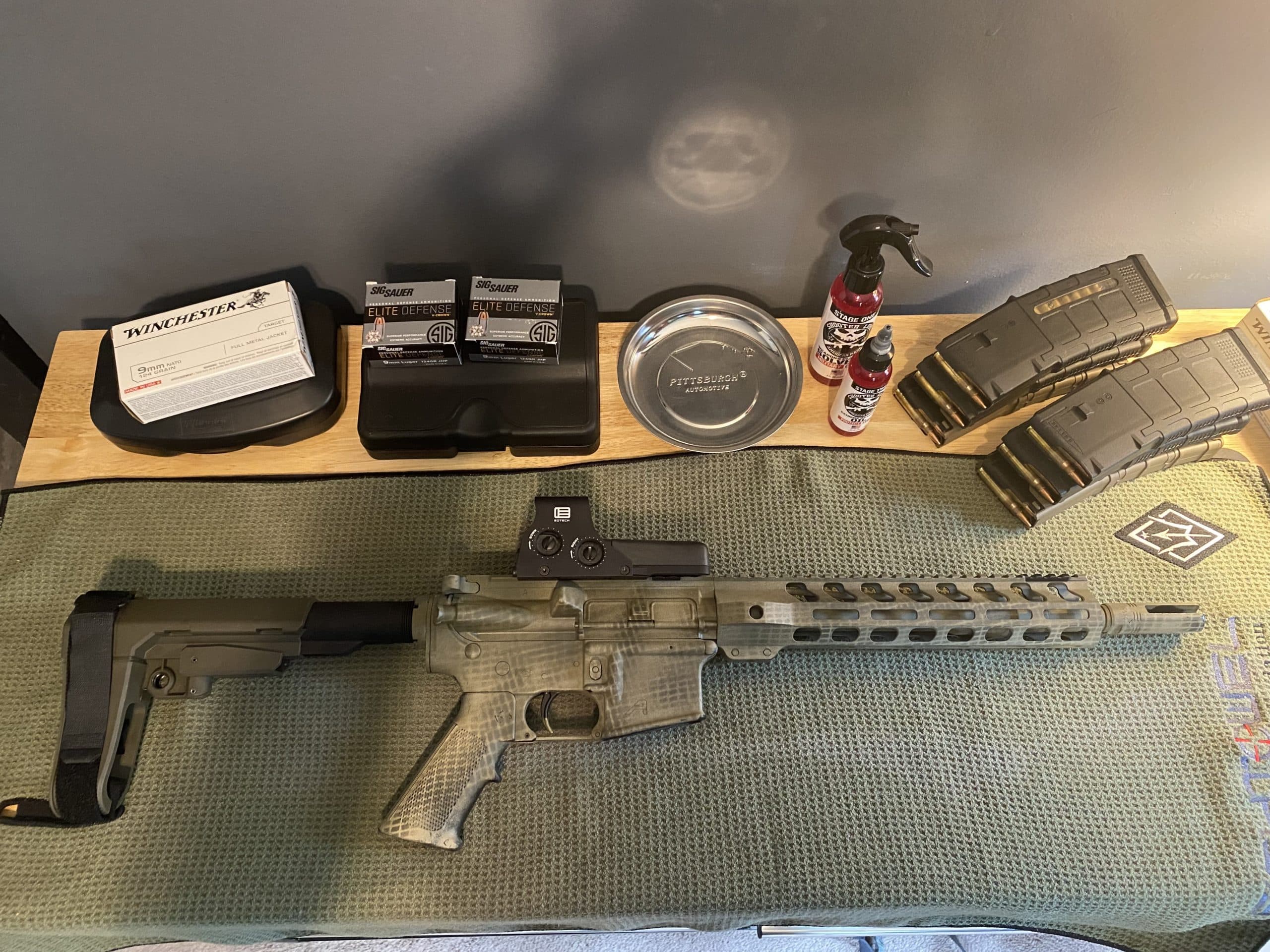The short answer is no, your AR pistol cannot be over 26 inches in length.
The ATF considers 26 inches as the breaking point for concealability. If your AR pistol is over 26 inches in length, the ATF considers that not to be concealable.
When determining the legal length of an AR pistol, you have to consider two measurements.
The length of pull (LOP) and overall length (OAL). Depending on what your measurements are according to the ATF worksheet, you may or may not have an AR pistol subject to the National Firearms Act (NFA).
Let’s try and break this down into the confines of an AR15 pistol platform.

Length of Pull (LOP)
The LOP is measured in a straight line from the face of the trigger to the rear of the stabilization brace. If the brace is adjustable, it needs to be fully extended when you take the measurement. The ATF has advised that a braced pistol with a length of pull in excess of 13.5 inches may constitute a re-design of the brace into a stock.
Length of pull is a common measurement of firearms that describes the distance between the trigger and the center of the shoulder stock. This is a measurement that may be used to fit a firearm to a particular shooter. Generally, taller shooters require a longer length of pull and shorter shooters require a shorter length of pull. Adjustable shoulder stocks are commonly available. Patents, advertising material, and other resources make clear that adjustability is meant to facilitate changing the length of pull.[20] Such length of pull measurements are far less relevant when a pistol is involved because a shooter merely requires a device that reaches from the back of the firearm to the forearm. Far less variation exists between shooters in this way. A firearm with a “stabilizing brace” will accrue more points the further it is positioned rearward, indicating that it is intended for use as a shouldering device. Firearms with “stabilizing braces” that incorporate a length of pull of less than 101/2 inches will not accrue any points (zero). However, a length of pull that is between 101/2 but under 111/2 inches will accrue 1 point, while 111/2 but under 121/2 will accrue 2 points, 121/2 but under 131/2 will accrue 3 points, and a length of pull of 131/2 inches or more will accrue 4 points as this is a standard length of pull for rifles and is a decisive indicator that the firearm is intended to be fired from the shoulder. (Source:
federalregister.gov)
Overall Length (OAL)
OAL is measured from the muzzle (excluding removable muzzle devices) to the rear of the buffer tube with the brace removed. If the end of the buffer tube is reachable when the brace is fully collapsed, then there is no need to remove the brace itself.
The ATF has consistently held that an overall length of 26 inches is the breaking point for concealability. In other words, if the AR pistol has an overall length of less than 26 inches, it falls into a category of firearms that could be considered to be regulated by the NFA depending on their other characteristics. Over 26 inches keeps the firearm outside of the NFA regulation. Other characteristics that affect the classification will be determined by the ATF worksheet 4999.
The overall length of a weapon is relevant in classifying it as a “rifle” or a “pistol” because, as a firearm becomes excessive in length, it is increasingly difficult to fire with one hand. The AR-type pistol has an overall length between 18 and 25 inches, depending on barrel length (due to the necessary inclusion of the buffer tube). Other large frame pistols range between 14 and 22 inches, such as the AK-type DRACO, HK SP5, and CZ Scorpion EVO. Firearms possessing an overall length between 12 and 26 inches may be considered pistols for which a “stabilizing brace” could reasonably be attached to support one-handed fire. Firearms with an overall length of less than 12 inches are considered too short to indicate any need for a “stabilizing brace.” Conversely, firearms exceeding 26 inches in overall length are impractical and inaccurate to fire one handed, even with a “stabilizing brace,” due to imbalance of the weapon. (Source:
federalregister.gov)
Check out our AR Pistol Laws blog to find out if your AR pistol is illegal or not.









Leave a Reply
Your email address will not be published. Required fields are marked *